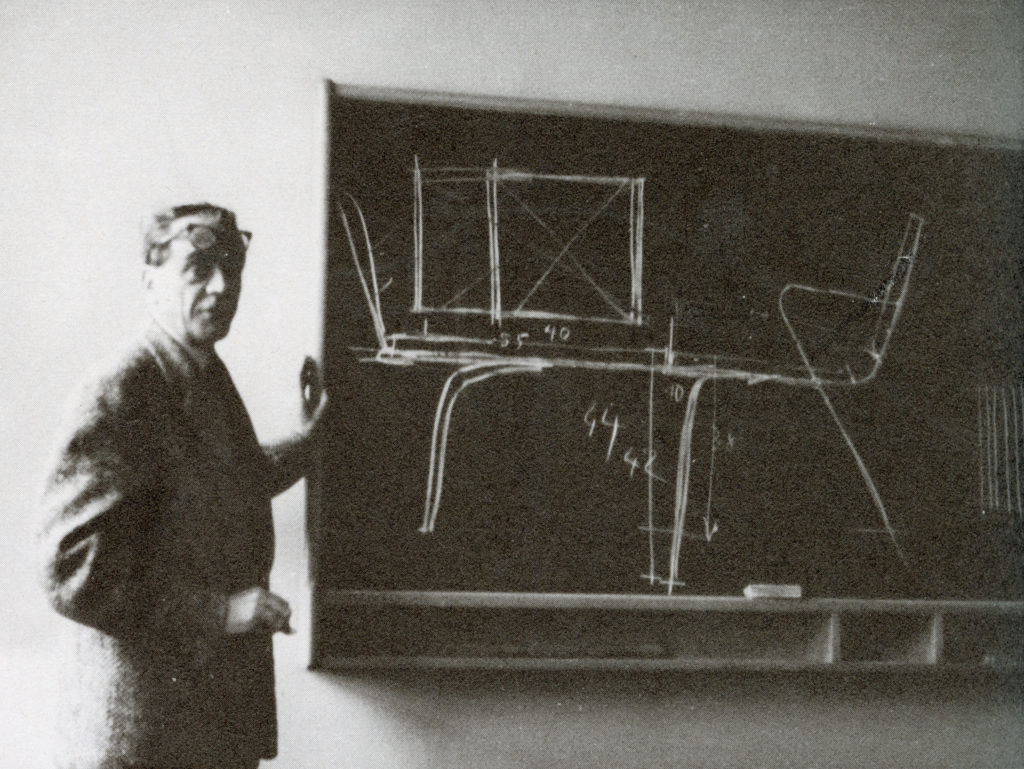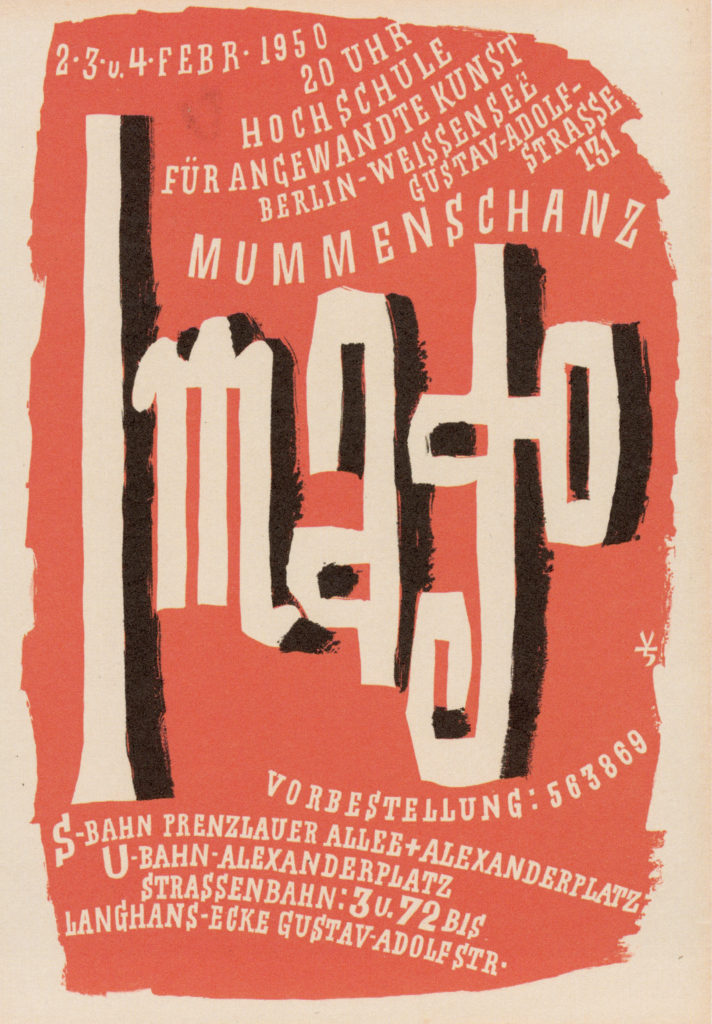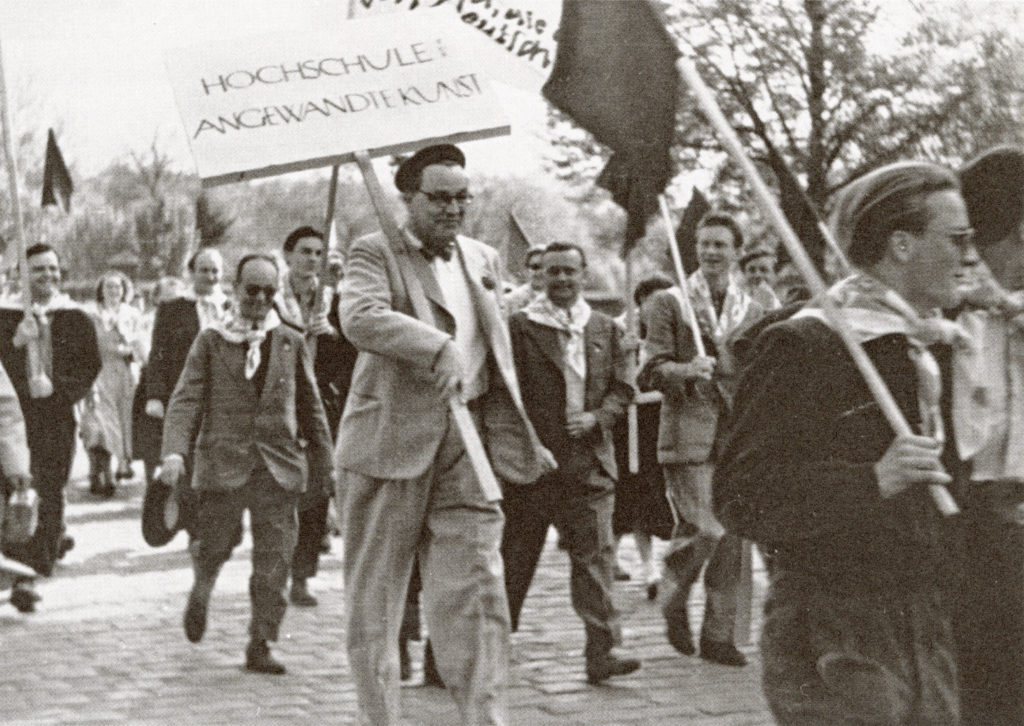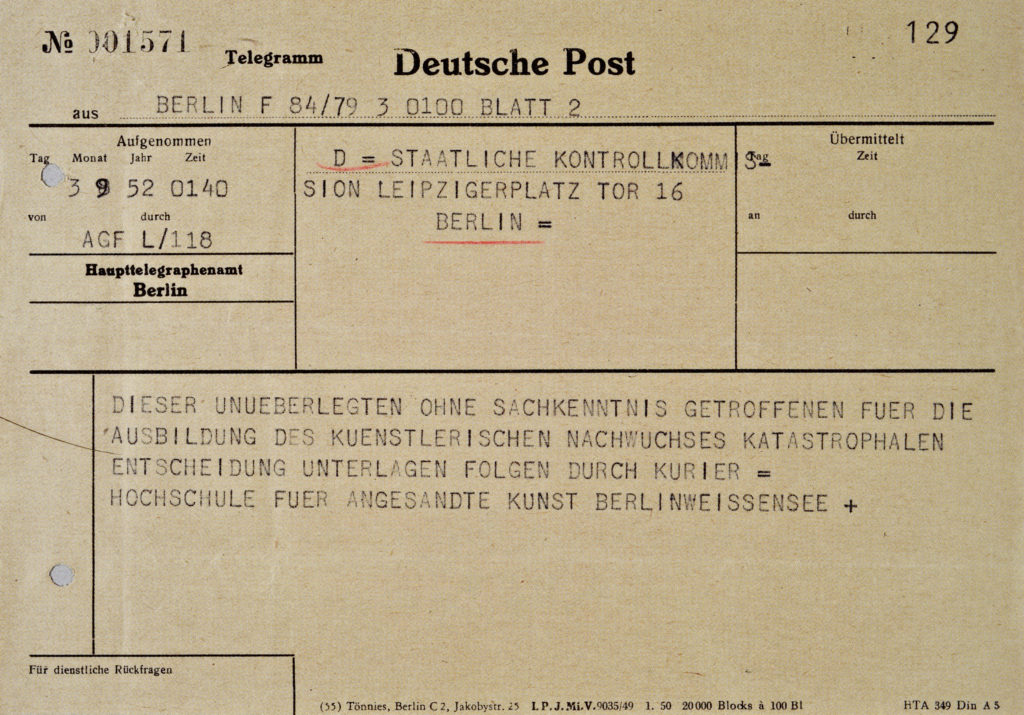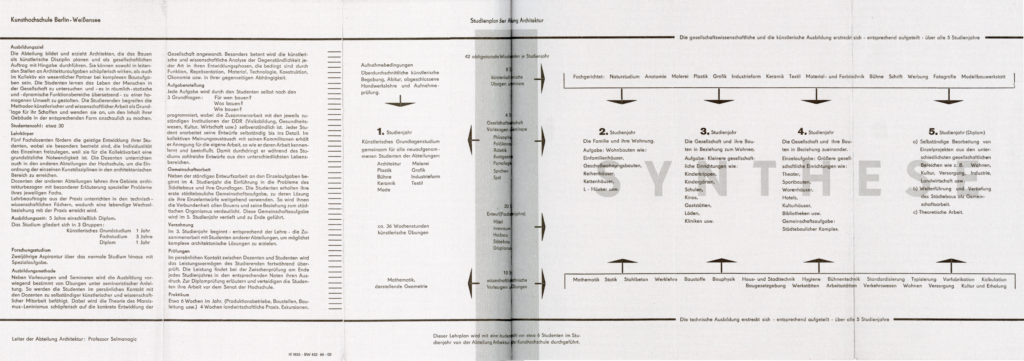The Weißensee Academy of Art Berlin was founded by artists and designers who were affiliated with the Bauhaus in 1946, during a turbulent period of postwar reconstruction. Initially temporarily based in the former Trumpf chocolate factory, in 1947 the school then known as the Art School of the North received state approval from the Russian military administration and was renamed the School of Applied Art, in which architecture and fine art were taught.
The first students attached great importance to this combination of subjects because they formed a cornerstone of training at the early Bauhaus. Its first directors were likewise rooted in this tradition: Jan Bontjes van Beek (1899–1969, ceramicist) from 1947 to 1950 and Mart Stam (1899–1986, architect and designer) from 1950 to 1952. Mart Stam’s short-lived but lasting work at the Berlin Hochschule, however, came under unfavourable auspices. As an advocate of modern form in the Bauhaus tradition, Stam was soon confronted with accusations of “formalism” by the SED-led cultural policy of the GDR. In mid-1952, he was removed from his post as rector and director of the Institute for Industrial Design, which he had founded in 1950. He left the GDR a short time later.
At the Institute for Industrial Design, which had a lasting influence on East German design, everyday objects were to be functionally designed, industrially producible and of high quality. Here, too, Mart Stam worked with former Bauhäuslers such as Marianne Brandt, Selman Selmanagić, Max Gebhard and Margarete Jahny, a graduate of the HfBK Dresden. The temporal context and the interconnections between the Institute for Industrial Design and the University of Applied Arts in Berlin-Weißensee were made visible with objects oriented towards functionalist tradition and clarity. In 1952, the institute was renamed the Institute of Applied Arts and oriented towards following the prescribed principles of the so-called “national tradition” and primarily propagating and promoting arts and crafts works with decorative ornamentation. However, the development of modern serial industrial products initiated by Stam and his colleagues could not be reversed, and at the end of the 1950s industrial design once again became the focus of interest in cultural policy.
The new extension of the Academy of Art Berlin was designed in 1955/56 by the Bauhaus student and architect Selman Selmanagić (1905–1986, tutor at the Academy of Art Berlin from 1950 to 1970) in collaboration with Peter Flierl, Günther Köhler and Erwin Krause. The first lecturers included prominent artists and designers such as the former Bauhauslers Theo Balden, Heinrich Drake, Bernhard Heiliger, Rudi Högner, Arno Mohr and Rudolf Vogenauer. The School of Applied Art was renamed the School of Applied and Fine Arts in 1953 and the Academy of Art Berlin in 1969. Some of the first intake of students on the form design diploma course, such as Christa Petroff-Bohne and Erich John, also taught here from the 1960s.
At the Academy, Christa Petroff-Bohne built up the visual design department of the product design faculty with a highly specific basic course inspired by the Bauhaus model. The construction of the Berlin Wall made Weißensee the most important educational institution for designers and architects in East Germany. The defining characteristics of the studies included an interdisciplinary concept, small classes, close supportive contact between professors and students, a first joint year for all students, training in the understanding of materials and focused work on prototypes. Since the German Unification Treaty came into effect in 1990, the school has been known as Kunsthochschule Berlin (Weißensee).
